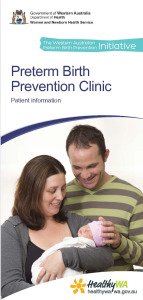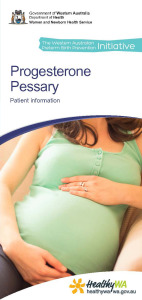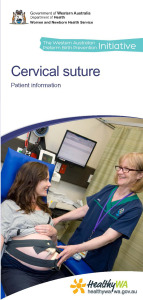 |
Until quite recently, preterm birth has been considered to be an unavoidable and accidental consequence of pregnancy. Thankfully, those times have changed and preterm birth is now considered to be preventable, at least in a proportion of cases. Several decades of research have given us a real chance of safely lowering the rate of preterm birth.
However, the rate of preterm birth has been rising dramatically in Australia and elsewhere over the last two decades.
What goes up can also come down and we have shown that to be the case. The Western Australian Preterm Birth Prevention Initiative program lowered the rate of preterm birth across the state by
7.6 per cent in its first year and by 20 per cent in the major tertiary level centre.
In the ACT, the rate of preterm birth was reduced by 10 per cent in the first year of their program.
It is reasonable to conclude that implementation of The Whole Nine Months program, using existing knowledge, can safely reduce the rate of preterm birth by 10 per cent or so. Perhaps even more.
For our nation with 300,000 births each year, and a preterm birth rate of 8.5 per cent, a 10 per cent reduction would result in at least 2500 fewer preterm births each year.
That of course would be a wonderful start, but we have so much more to be done. |
| Click here for Stories, Facts and Stats on Preterm Birth |
| There are many reasons for having a preterm baby, some are unknown but others can be avoided. In Australia, 1 in every 12 pregnancies end too early – leading to more than 26,000 preterm births every year. Most children born too early go on to lead normal and productive lives. But for many others there may be serious medical problems followed by life-long disability. The following preterm birth prevention interventions are recommended for application into all clinical practices. |
| 1. Your mid-pregnancy ultrasound scan |
| Make sure that the length of your cervix is measured whenever you have an ultrasound scan between 16 and 24 weeks of pregnancy. This is now recommended by the WA Preterm Birth Prevention Initiative as standard practice within Western Australia and all sonographers should be fully trained to perform the measurement. The length of your cervix in mid-pregnancy is a strong predictor of your risk of preterm birth. There are no symptoms to tell you that this may be happening. If the cervix is shortened then your doctor needs to be consulted urgently to prescribe the appropriate treatment to reduce your chance of preterm labour. |
| 2. Measuring the length of your cervix |
| In those cases in which the cervix can be imaged clearly on trans-abdominal scan (the routine method of scanning) a length of 35 mm or more is adequate. If the operator cannot image your cervix clearly, or if the measurement is less than 35mm, then an internal (trans-vaginal) scan needs to be performed. The length of the cervix on trans-vaginal scan below which treatment is required is 25 mm. This length is less than required at trans-abdominal scan because routine (trans-abdominal) scans have a full bladder which can stretch the length of the cervix, while internal scans are performed with an empty bladder at which time the true (unstretched) length of the cervix is measured. |
| 3. If your cervix is shortened |
| If your cervix is less than 25mm on an internal scan your doctor needs to prescribe natural vaginal progesterone 200mg given as a pessary. This pessary (like a simple tablet) is inserted into the vagina each night at bedtime. This treatment should continue until 36 weeks gestation and is expected to halve the risk of preterm birth. In cases in which the cervix length is less than 10mm on internal scan, or in some cases where there is a history of previous preterm birth, the cervix may need to closed surgically by placement of a stitch. This technique is known as cerclage of the cervix and the decision requires specialist opinion and treatment. |
| 4. If you have a history of preterm birth |
| Vaginal progesterone 200mg pessaries are also to be prescribed for any case in which there is a history of spontaneous preterm birth in a previous pregnancy between 20 and 34 weeks gestation. The treatment is used each night from 16 to 36 weeks’ gestation. |
| 5. Go thewholeninemonths if possible |
| No pregnancy is to be ended prior to 38+ weeks’ gestation unless there is medical or obstetric justification. While most babies born in the days and weeks before this time can be expected to survive and live a healthy life, there are definite risks to the child of being born before 38 weeks of pregnancy, including learning and behavioural problems at school age. If, however, there are risks to the pregnancy then your doctor may advise earlier birth on safety grounds. |
| 6. Do not smoke cigarettes |
| Women must not smoke, or be exposed to cigarette smoke, during pregnancy. Smoking is a major and totally avoidable cause of preterm labour. There are excellent services available through the Western Australian Department of Health. Speak to your doctor about ways you can quit and look on-line at the Quitline website. |
7. The Preterm Birth Prevention Clinic – WA only
|
| For women in Western Australia at very high risk of preterm birth you may speak to your doctor about being referred to the multi-disciplinary Preterm Birth Prevention Clinic at King Edward Memorial Hospital. Typically, a management plan is developed and the woman is then referred back to her referring practitioner when the high risk period is concluded. The clinic has Maternal Fetal Medicine specialists, ultrasound imaging facilities for cervix length measurement, and mental health care and midwifery services. |
| 8. Use fertility treatments with appropriate caution |
| In vitro fertilization (IVF) and ovarian stimulation increase the risk of preterm birth. Part of this increased risk results from multiple pregnancies, part results from the cause of the underlying sub-fertility, and part results from other factors that remain unclear. The PTBP Initiative recommends that fertility treatments be used with appropriate caution and applied with a full understanding of the potential to increase the risk of early birth. |
| 9. Pre-conception care and planning a pregnancy |
| Medical professionals will be encouraged to advise women to prepare for a future pregnancy by optimising their health and seeking pre-conception counselling. This is especially important for women who have an increased risk of preterm birth resulting from a personal or family history of early birth, prior surgical intervention on the woman’s cervix, or recurrent miscarriages, or those at the extremes of maternal age or where the inter-pregnancy intervals may be less than 18 months. |
| Other health optimising strategies will be encouraged such as the normalising of body weight, avoidance of alcohol consumption and recreational substance abuse, the taking of supplementary folate daily for at least three months before conception, the stabilisation of autoimmune conditions and the control of blood glucose levels or blood pressure in women with diabetes or hypertension respectively. |
Patient Information Brochures











